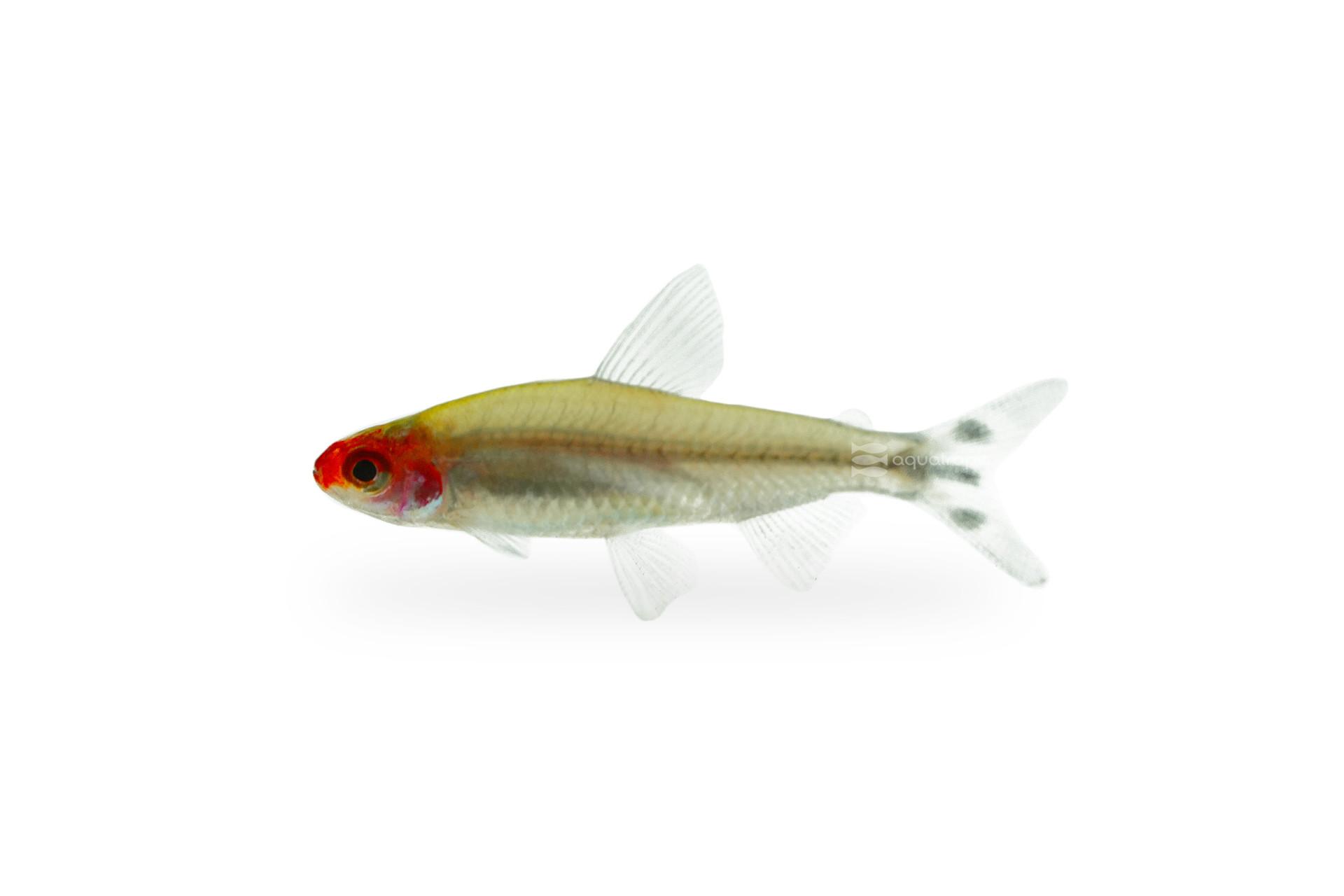The Rummynose Tetra

Name and morphology The Rummynose Tetra (Hemigrammus rhodostomus) is a member of the family Characidae. Reaching a length of about two inches, these fish have a transparent body, a white and black striped caudal (tail) fin, and a red nose, as the name suggests. The name “rhodostomus” is a mixture of two Greek words rhodo (red) and stoma (mouth).
Distribution and Habitat Rummynose Tetras are found in South America, specifically in the lower Amazon basin and also the Orinoco River basin. They are found in blackwater habitats, which means water stained brown with decomposing organics: leaf litter, and driftwood. Aquatic plants are uncommon in their natural habitat, perhaps due to reduced light penetration from the tannins in the water.
Aquarium Requirements These fish will do well in an aquarium of 20 gallons or more, and as they are a schooling fish, larger groups will make them feel more at home and allow them to display better coloration and more natural behaviors like shoaling in the aquarium. Clean water, a sandy substrate, leaf litter, and driftwood are the components required for emulating the natural environment of Rummynose Tetras, but these fish adapt very well to life in planted aquariums as well. They are a smaller, non-boisterous fish, so they should be paired with other peaceful fish that make them feel safe and do not compete for food. They can be kept with larger cichlids with small mouths – such as discus. Consider a group of seven of these fish to be an absolute minimum as far as stocking goes.
Feeding A voracious and non-picky eater, Rummynose Tetras adapt well to life in the home aquarium. That said they are a smaller fish, with a small mouth. Appropriately sized food is of the utmost importance – but they will accept quality flakes and pellets of the appropriate size and offerings of live and frozen foods will be accepted with relish, leading to better coloration, and potentially inducing spawning.
Breeding Rummynose Tetras are not too difficult to breed, given proper conditions. Reverse osmosis water, stained with leaves or some peat moss in the filter will help. Dim or diffuse lighting helps these fish, and their fry feel safe. Live foods will help condition the fish for spawning, and once it occurs you need to either remove the eggs or the parents, as they will consume their own eggs. Fish should hatch in 3-4 days and once free swimming will require food such as infusoria until they are large enough to take baby brine shrimp.
Conclusion Rummynose Tetras are a visually unique – the bold checkering of the tail fin, the transparent body, to the bright red nose – they bring movement and intrigue to any aquarium looking to be slightly different from some of the other popular tetra choices. Ask your local fish store to order you a sustainably sourced group of Rummynose Tetras from Aquatropic today!